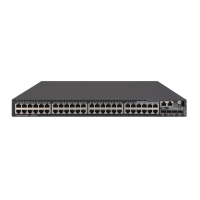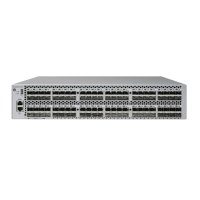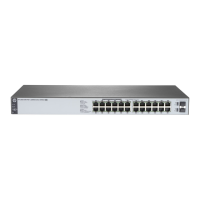414
• Disabling interfaces from receiving and sending OSPFv3 packets
• Enabling logging for neighbor state changes
• Configuring OSPFv3 network management
• Setting the LSU transmit rate
• Configuring stub routers
• Configuring prefix suppression
• Setting the maximum number of OSPFv3 logs
• Configuring OSPFv3 authentication
(Optional.) Configuring OSPFv3 GR:
• Configuring GR restarter
• Configuring GR helper
• Triggering OSPFv3 GR
(Optional.) Configuring OSPFv3 NSR
(Optional.) Configuring BFD for OSPFv3
(Optional.) Configuring OSPFv3 FRR
(Optional.) Applying an IPsec profile
Enabling OSPFv3
Before you enable OSPFv3, configure IPv6 addresses for interfaces to ensure IPv6 connectivity
between neighboring nodes.
To enable an OSPFv3 process on a router:
• Enable the OSPFv3 process globally.
• Assign the OSPFv3 process a router ID.
• Enable the OSPFv3 process on related interfaces.
The router ID uniquely identifies the router within an AS. If a router runs multiple OSPFv3 processes,
you must specify a unique router ID for each process.
An OSPFv3 process ID has only local significance. Process 1 on a router can exchange packets with
process 2 on another router.
To enable OSPFv3:
1. Enter system view.
system-view N/A
2. Enable an OSPFv3 process
and enter its view.
ospfv3
[ process-id |
vpn-instance
vpn-instance-name ] *
By default, no OSPFv3 processes
are enabled.
3. Specify a router ID.
router-id
router-id
By default, no router ID is
configured.
4. Enter interface view.
interface
interface-type
interface-number
N/A
5. Enable an OSPFv3 process
on the interface.
ospfv3
process-id
area
area-id
[
instance
instance-id ]
By default, no OSPFv3 processes
are enabled on an interface.

